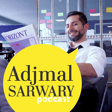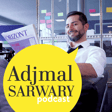
#17 - David Owald - Tiny Brain, Big Insights: What a Fruit Fly Can Teach Us About Memory
What happens in the brain when we learn new information, and how can understanding fruit fly memory help us unlock the secrets of human cognition?
In this episode, I had an insightful conversation with Prof. Dr. David Owald, an expert in neurobiology, who delves into the complexities of memory storage and learning processes as observed in the humble fruit fly. We explore how these simple organisms can reveal profound insights into the mechanisms of memory and how our brains function.
Key highlights include:
- The role of synaptic plasticity in memory formation and how David studies these processes at the molecular level in fruit flies.
- The fascinating dynamics of the mushroom bodies in the fly brain and their critical role in how flies learn and remember odors.
- An exploration of how sleep affects memory consolidation, emphasizing the surprising parallels between insect and human brains.
- Insights into attention and decision-making, including how flies prioritize information and behavior based on their internal states.
- Discussion on the challenges and triumphs of scientific research, including unexpected findings that can reshape our understanding of memory mechanisms.
If you’re interested in how learning happens at the neural level, the parallels between different species, and the implications for understanding human memory, this episode is packed with valuable insights you won't want to miss!





